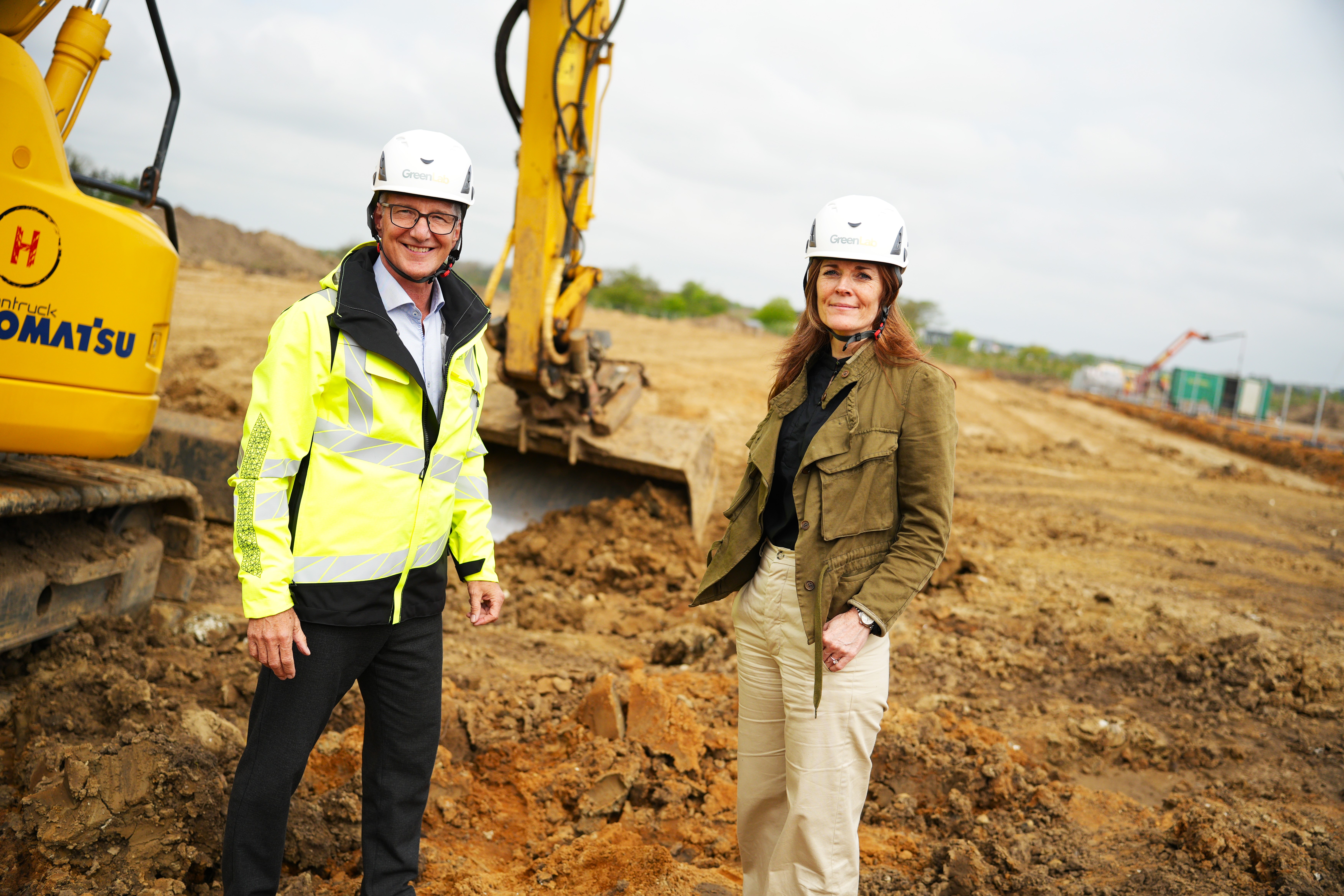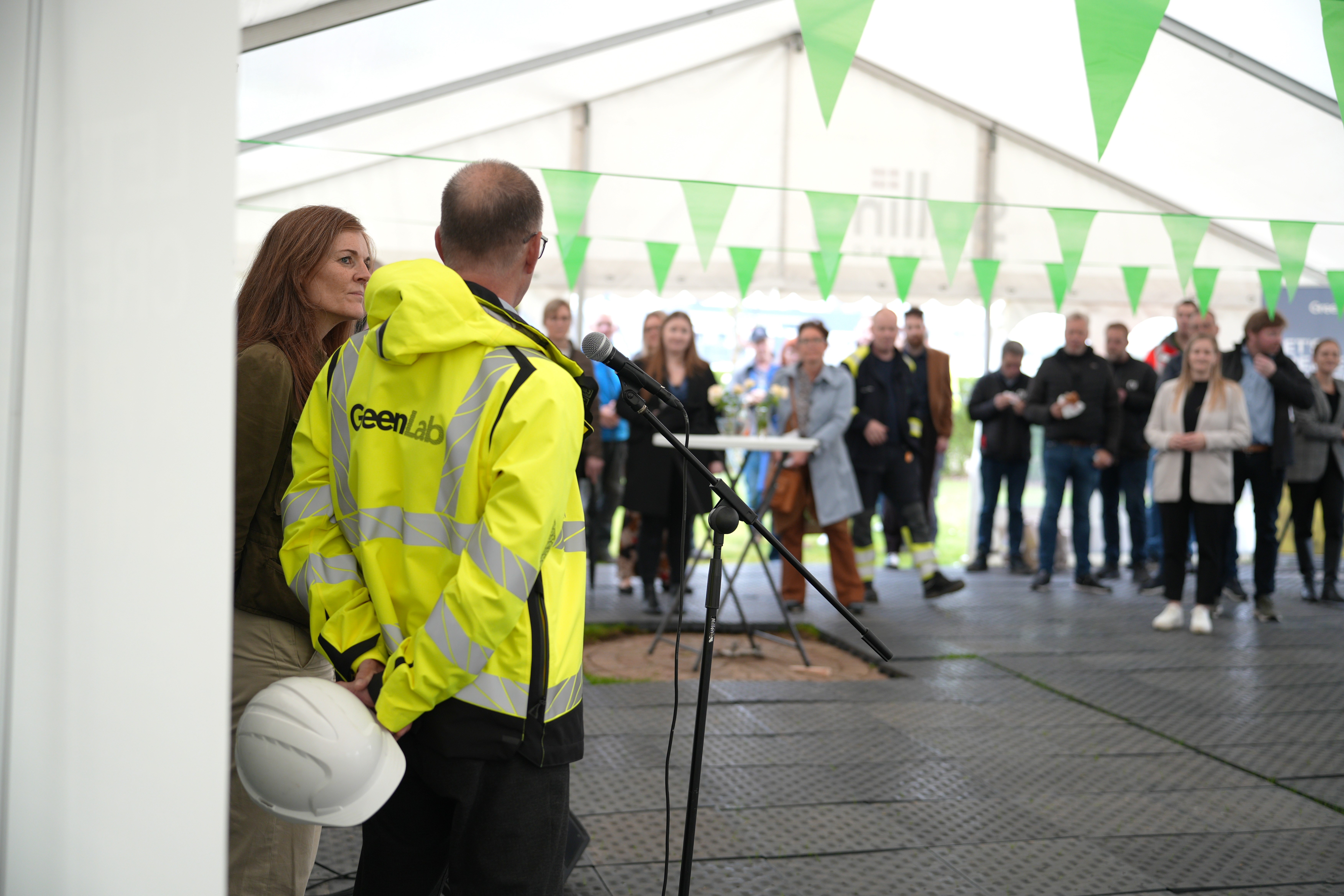GreenLab invests 160 million DKK in green infrastructure and activates regulatory test zone
GreenLab has invested 160 million DKK in green infrastructure that involves establishing a new transformer station in the industrial park, and today marked the groundbreaking event. We’ve also activated our status as a regulatory test zone – a designation given by the Danish Energy Agency in 2021.
A double milestone day
A key objective for GreenLab is to ensure access to green electricity for the businesses located in the industrial park and to optimise the utilisation of green power through advanced storage technologies like Power-to-X. To achieve this, GreenLab has invested DKK 160 million in infrastructure, establishing a direct link between the solar and wind park south of GreenLab and the industrial park itself. The solar and wind park currently supplies 84MW. This investment covers the purchase of four transformers and the construction of a new transformer station, which will increase capacity to 200MW. This move consolidates GreenLab's position as a leading player in sustainable energy production and utilisation. "The wind turbines at GreenLab will now drive local green growth and make industrial production more sustainable. We celebrate that, as well as the establishment of Denmark's very first green industrial cluster," says Christopher Sorensen, CEO of GreenLab.
Historic test zone permit enables co-location of production and consumption
In 2021, the Danish Energy Agency appointed GreenLab as a regulatory test zone, and on 1 May 2024, the test zone was officially activated. This enables GreenLab to co-locate energy production and consumption within the green industrial park without negatively impacting the existing collective energy grid. By creating a "feed-in zone" for green electricity, it is possible to test new facility possibilities and innovative business models. The test zone is established in close cooperation with the grid operator, Elnetselskabet N1, and the Danish Energy Agency, both of whom are exploring new ways of developing and building the electrical infrastructure.
The goal is for GreenLab to inspire the future layout of the Danish energy system. Co-locating energy production and consumption makes massive investments in expansion of the collective grid unnecessary.
"Projects like these are how Denmark can maintain its green frontrunner position – we have to continuously innovate traditional systems like the national grid," says GreenLab CEO, Christopher Sorensen. He adds, "With the test zone and investment in green infrastructure, we are taking a decisive step with N1 and the Danish Energy Agency towards realising the goal of sustainable industrial production." The increased capacity ensures that GreenLab can supply companies in the park with various sources of renewable energy to support their green operations. The goal is also to keep the wind turbines running even when the collective grid is overloaded, as GreenLab will soon be able to store and convert excess power.
Access to hard-to-get transformers secured
Transformers are key to the direct supply of green energy, but they are currently in high demand and have long delivery times. GreenLab purchased its new transformers through our collaboration with N1. Today's event at GreenLab marked the groundbreaking for the transformer station. N1's new CEO, Lise Søgård Bering, was among the participants along with representatives from companies in GreenLab's industrial park, Skive's mayor, Peder Christian Kirkegaard and CEO and CFO in Norlys a.m.b.a Niels Duedahl and Gert Vinther Jørgensen.
The first to do green transition in action in Denmark
GreenLab is known for being a frontrunner in the green transition of industry. Just a few months ago, we were one of two signatories to Denmark's first Power Purchase Agreement (PPA) between a green energy supplier (Eurowind Energy) and GreenLab as an industrial cluster and consumer. Today's groundbreaking and the test zone commissioning are another vital step in the same direction. The transformer station is expected to be ready by the end of 2024.




